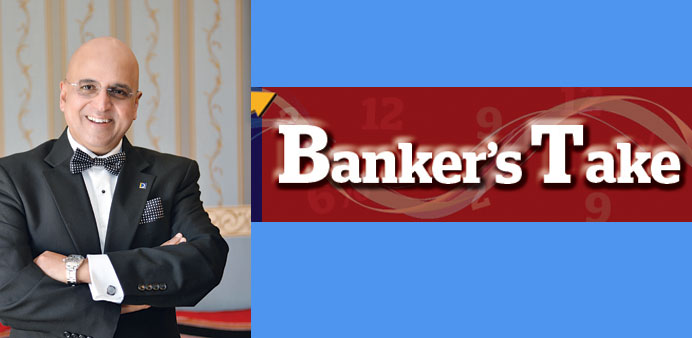We saw last week Saudi Arabia announcing its budget for 2017. It plans to spend 890bn Saudi riyals in 2017, which is 8% higher than the actual spending in 2016.
Saudi is to spend 268bn riyals on its National Transformation Plan through 2020; of which 42bn is allocated for 2017. The projected revenue is at 692bn riyals in 2016, which is 31% higher than the actual revenue of 2016.
The year 2017 has a fiscal deficit projected at 7.7% of the Gross Domestic Product, or 198bn riyals. The fiscal deficit is to be financed by issuing debt and drawing from reserves.
The oil revenue in 2017 is expected to be 480bn riyals, which is a 46% increase over the oil revenue of 2016. The non-oil revenue in 2017 is expected to be 212bn riyals, which is 6.5% increase over the non-oil revenue of 2016.
The government is focused on increasing non-oil revenue, which expects it to account for 50% of the total by 2020. “Selective taxes” on tobacco, soft- and energy-drinks are to be imposed during 2017. The government is to introduce 5% value-added tax in 2018. It has no plans to impose taxes on nationals and residents, or to tax Saudi companies. However, the government is to introduce a “small” fee on foreign residents.
The public debt is estimated at 12.3% of GDP in 2016. Total debt reached 316.5bn riyals. The Saudi budget presumes that a better oil price scenario in 2017 will improve revenue and boost spending, based on recent Opec decisions. We need to look out for this scenario in 2017.
The UAE cabinet approved an AED48.7bn ($13.3bn) spending in the federal budget for 2017 with a revenue projection of Dh47.696bn. Around AED25.2bn has been allocated to sectors affecting the lives of the UAE citizens. While AED10.2bn has been earmarked for the general and higher education sector, AED4.2bn has been set aside for healthcare, AED4bn for pensions, AED3.2bn to social development and AED1.6bn has been allocated for housing.
Dubai has approved a spending of AED47.3bn in its 2017 budget, which will create more than 3,500 jobs for emiratis. The revenue is expected to be AED49.8bn.
The 2017 budget has a deficit of AED2.5bn, which represents 0.6% of the GDP of Dubai. The 2017 budget will see spending on infrastructure next year rising by 27% as the emirate continues to launch development projects ahead of its hosting of the World Expo in 2020.
Kuwait’s budget for 2016-17 sees revenue at KD10.2bn. The allocated expenditures in the budget were reduced by 1.5% to KD18.9bn. The fiscal is at KD8.7bn or estimated at a deficit of 13% of the GDP assuming oil price at $35 per barrel. The National Assembly approved the financing part of the budget deficit by raising KD5bn in local and international bonds and sukuk during the financial year 2016-17. Expenditures on goods and services and projects, maintenance and land purchases are set to decline by 14% and 13% respectively, compared to previous year. Qatar’s 2017 budget has budgeted revenues of QR170.1bn and an expenditure of QR198.4bn, thus expecting to post a deficit of QR28.3bn. The budget has been based on an oil price assumption of $45 per barrel. The shortfall is expected to be covered by issuing debt instruments in the local and international financial markets, while maintaining its reserves and investments. The projected deficit in the 2017 budget was due to “a combination of low energy prices and a period of high development expenditure.
Total allocation for key sectors such as health, education and infrastructure (QR87.1bn) made up nearly 44% of the total expenditure in the 2017 budget. Funds amounting to QR24.5bn have been allocated to the health sector, representing 12.3% of total expenditure in 2017 budget. The government also continues to focus on education, allocating QR20.6bn to the sector, which represents 10.4% of the total expenditure.
Transportation and infrastructure projects, which represented a main pillar of enhancing sustainable development, have been allocated QR42bn, representing 21.2% of the total budgeted expenditure.
Funds were allocated to rail projects worth QR10bn and for Hamad Port, along with a large number of roads including the Lusail road, Al Rayyan road, Dukhan road, the new ring road for trucks and the new Al Khor road. Infrastructure projects include land reclamation in North and West Doha, Al Khor, Al Mashaf, Al Wakrah and Al Wukair.
On the whole, the GCC budgets have emphasised on non-oil diversification and fiscal consolidation.
* Dr R Seetharaman is Group CEO of Doha Bank.

Dr R Seetharaman
